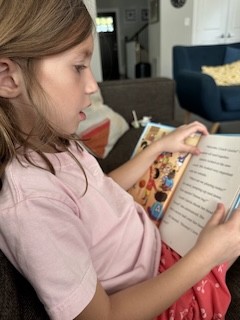Dyslexia is a serious problem and one deserving instructional attention. The term dyslexia has been, justifiably, controversial, and has consequently been avoided by most reading educators—including me. The reason for its gingerly handling is that it is a description of reading disability that includes etiology; that is, an explanation of cause.
Dyslexia refers to a neurologically based disorder. The idea is that dyslexic students’ brains fail to process information properly or well and that this causes their difficulty in learning to read. The definition is somewhat circular because the purported brain problem is not actually measured… it is inferred from the reading problem. Thus, neurological processing problems cause low reading ability and we know the student has a neurological processing problem because he is struggling to read.
Contrast, dyslexia with its well-respected sister alexia. Alexia is a reading problem caused by a neural injury. The person could read or seemed to be learning to read just fine, then a spike went through his/her brain and since then, there has been a reading problem. Alexia is a learning problem acquired through neurological injury, while dyslexia is a learning problem caused by an assumed neurological problem. That’s why dyslexia is sometimes referred to as “minimal brain dysfunction” or “minimal brain injury.” (Even with all of the new brain technology and research, we do not have a procedure that can reliably identify which brains are going to struggle in learning to read.)
That would all be fine if neurological problems were the only phenomenon that interrupts literacy learning. Unfortunately, they are not. For instance, poverty can disruptive learning, and, of course, there is just good old lousy teaching (dysteachia?).
Under U.S. law, dyslexia does not include learning problems that result from “visual, hearing, or motor disabilities, mental retardation, emotional disturbance, or environmental, cultural, or economic disadvantage.” This meant, for example, that kids could not receive special education for dyslexia if they had low IQs, because their reading problems may have been due to their limited mental functioning.
But what constitutes cultural or economic disadvantage? What a strange brain malady, indeed, that can only be acquired by those whose families have lots of money—flying over the houses of boys and girls living in want.
I’m not claiming dyslexia doesn’t exist or that no reading problems are neurological in nature and genetic in basis—yes, Virginia, I do believe in dyslexia. But labeling kids as having neurological deficits is not helpful unless there is some specific teaching response that diagnosis instigates.
That’s where Orton-Gillingham supposedly comes in. But before dealing with whether O-G is the one true way to teach dyslexic students, let’s take a last detour in thinking about dyslexia.
There are scads of studies revealing that dyslexia is phonological in nature. That is, students with this disorder have a particularly difficult time perceiving phonemes and coordinating this perception with the letters on the page. English is an alphabetic language, so not being able to easily connect these bits of information neurologically is a real problem. (The research also suggests that is not the only problem--at least in the long run).
But doesn’t that mean that I’m talking out of both sides of my mouth? Didn’t I just say that a problem with the dyslexia diagnosis is that it doesn’t tell you what or how to teach, and then I turned right around and said that dyslexia is basically a decoding issue? If that’s the case, then why not just teach these students phonics and be done with it?
The problem with that reasoning is that NICHD research suggests that when elementary kids have reading problems, they tend to be problems with phonological awareness and decoding about 86% of the time. That means that it is an instructional need of most young kids who struggle to read, no matter what the etiology. Even those who are struggling due to poverty or bad teaching are likely to get tripped up by their decoding needs.
But wasn’t Orton-Gillingham created to address the specific phonics needs of kids with dyslexia? It was. It was created in the 1920s and was aimed specifically at helping children to see words properly (at the time they thought dyslexics were seeing words backwards—that’s not the case, which shows how dicey this whole idea is of prescribing instruction aimed at particular brain maladies).
In my reading of the research, I see that O-G has been effective, in some cases, in improving the reading ability of struggling readers. I have also seen research in which it was not so effective (though in fairness, O-G has been evaluated with disabled readers whose difficulties were particularly severe--that has not been true of other phonics-based approaches).
But there is no research showing that O-G is more effective than other thorough, structured programs aimed at teaching phonological awareness and decoding. In fact, there are many such programs available (look at the research evidence provided by the What Works Clearinghouse).
I have heard from many parents during the past year providing testimonials to O-G based on their experiences (which usually included fights with their local school to obtain a sufficiently thorough and powerful decoding program for their child). That O-G worked with their child demonstrates that it can work. That O-G has not consistently done so in the research shows it is not the cure all some may claim, and that research has supported the effectiveness of so many other instructional procedures (including those that are not multisensory) for teaching such children, suggests that O-G may not even be the best response to their needs (though we don't know that yet).
What should not be happening is fights between parents and schools over whether to address these children's decoding needs. Whether we call it dyslexia or just a reading problem, it will not likely be outgrown and explicit teaching of decoding skills is quite often an appropriate part of the solution.







Comments
See what others have to say about this topic.